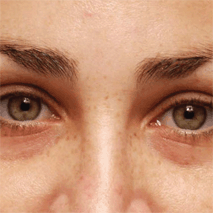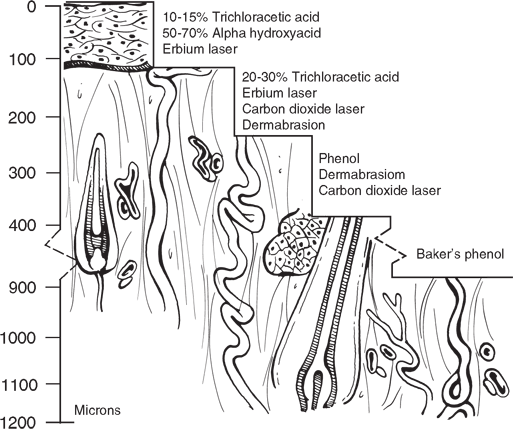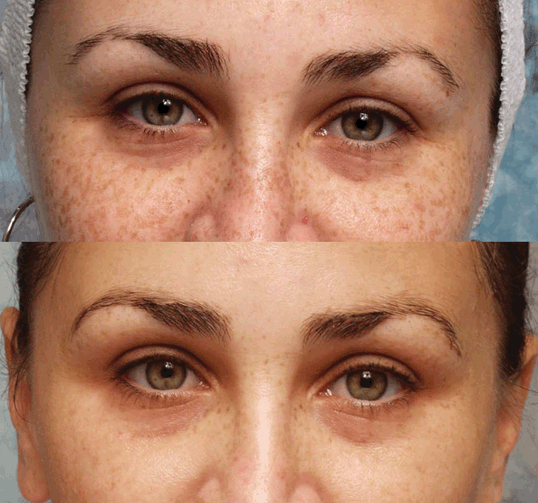37 Chemical and Laser Skin Resurfacing

INTRODUCTION
The human face is a dynamic tool important in communication. Beyond conveying emotion, it also serves to highlight such characteristics as gender, age, ethnicity, kinship, overall vigor, and apparent fertility. Given the relatively high value placed on a youthful appearance in today’s society, it is not surprising that patients often seek to delay the damaging social effects of age, gravity, environment, and sunlight on the appearance of facial skin.
Skin damage treatments consist of both incisional procedures and nonsurgical techniques. The latter includes chemical peels, light-based therapy, and ablative and nonablative laser treatments. Surgical treatment is designed to address deeper changes such as rhytids due to dermal collagen changes, while nonsurgical methods are designed to primarily correct epidermal changes such as solar lentigenes.
Of note, dermabrasion is another method of skin resurfacing, which uses a handheld mechanical rotary burr, wire brush, or diamond wheel to debride the superficial skin layers. The procedure is effective, but requires experience, aerosolizes blood, lacks predictability and uniformity of treatment depth, and is unforgiving in terms of scarring and pigment changes.

Figure 37-1. Chemical skin peeling is generally divided into three categories (light, medium, or deep) depending on the depth of induced chemical injury. The relative depth of various chemical peels and ablative laser methods is shown here. (Fig. 37-1 is adapted from an image copyright and courtesy of Kenneth Steinsapir, MD, and is reproduced with permission.) Light chemical peeling may be performed by patients at home or by aestheticians. An exfoliating agent, usually an alpha-hydroxyacid, is applied to the skin to exfoliate the outermost epidermal cells. Patients generally experience erythema for a short duration following application. Several treatments spaced a few weeks apart are generally applied, followed by monthly maintenance treatments. The depth of light chemical peels is similar to that of microdermabrasion, and the two treatments may be combined for greater effect. The skin responds to treatment by temporarily generating new epidermal cells, reducing pore size, and decreasing abnormal pigmentation.
Medium depth chemical peels include trichloroacetic acid as the active ingredient. Extreme care should be taken to avoid corneal injury. These peels are often followed by several days of dry scaling skin as sloughing ensues. They create a longer lasting improvement in fine wrinkling, a vigorous healthy skin appearance, marked reduction in sun-related pigment changes, and reduce the number of actinic keratoses.
Phenol peels are used for deep chemical peeling. Risks of phenol peels include cardiac arrhythmias, renal toxicity, and hepatic toxicity. Deep chemical peeling with phenol results in a raw, weeping skin surface, which may last up to 2 weeks. Patients also experience marked facial edema and erythema that may persist for 12 weeks. The dramatic results are similar to ablative CO2 laser resurfacing. EKG monitoring and IV hydration are necessary because skin absorption of product may result in cardiotoxicity. Hypopigmentation is a common side effect. Complications of treatment include corneal injury and skin scarring.
Light-based skin resurfacing treatments include Intense Pulsed Light (IPL), BroadBand Light (BBL), and visible-wavelength laser treatments. IPL uses a broad spectrum flash lamp and a filter to narrow the output. For example, flash lamp output usually ranges from 500 to 1,200 nm. A 560 nm filter effectively blocks light from 500 to 560 nm and only allows wavelengths from 561 to 1,200 nm to reach the target. Light-based treatments, whether IPL or laser, all work through the principle of selective photothermolysis wherein the desired wavelength of energy is selected in order to match the absorption spectrum of the target chromophore while minimizing collateral injury. With this method, wavelengths may be selected to deliberately target pigmented lesions (melanin chromophore), rosacea and blood vessels (chromophore hemoglobin), or hair follicles (melanin). Other parameters that also influence tissue energy delivery include pulse duration, role of wavelength in tissue penetration, Fitzpatrick skin-type, spot size, pulse frequency, tissue temperature or cooling device, and the need for coupling gels or devices.

Figure 37-2. IPL and BBL treatments are valuable in treating facial sun damage (lentigines), telangiectasias, cystic acne, and actinic keratosis. Pictured here are preoperative (top) and postoperative (bottom) appearance of facial skin lentigines following pulsed light therapy. (Fig. 37-2 image copyright and courtesy of Kenneth Steinsapir, MD, and is reproduced with permission.) Both the patient and treating physician should take precautions to avoid possible injury from direct viewing of the bright flash. Various filters are employed to eliminate shorter wavelengths and hone treatment for the particular clinical condition. Office-based full-facial IPL treatments may be performed in a relatively short amount of time. Topical anesthetic gel may be used to ameliorate the moderate discomfort experienced by most patients. Skin cooling with chilled optical coupling gels or a cooled-air chiller allows for deeper and heavier treatment while providing a small amount of cryoanesthesia. Additionally, it cools the epidermis to protect the epidermis from overheating and injury. IPL and BBL may be combined with 5-amino-levulinic acid for greater effect and to treat actinic keratosis and cystic acne. Usually, three to five treatments are performed 3 to 5 weeks apart for maximum benefit. Generally, treatments are followed by minimal erythema lasting from 30 minutes to a few hours. However, heavier treatments may result in bruising, blistering, and even scarring and hyperpigmentation.
Stay updated, free articles. Join our Telegram channel

Full access? Get Clinical Tree


